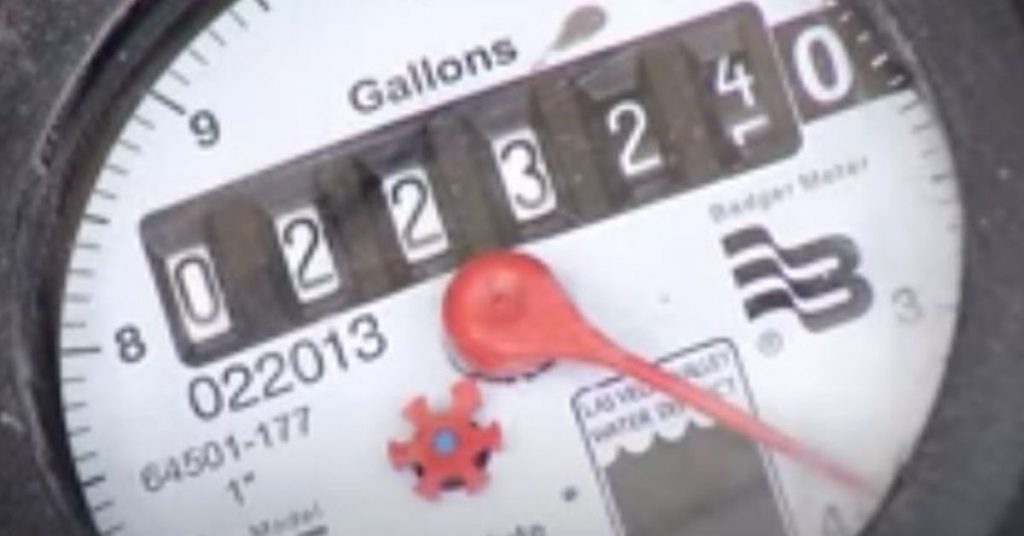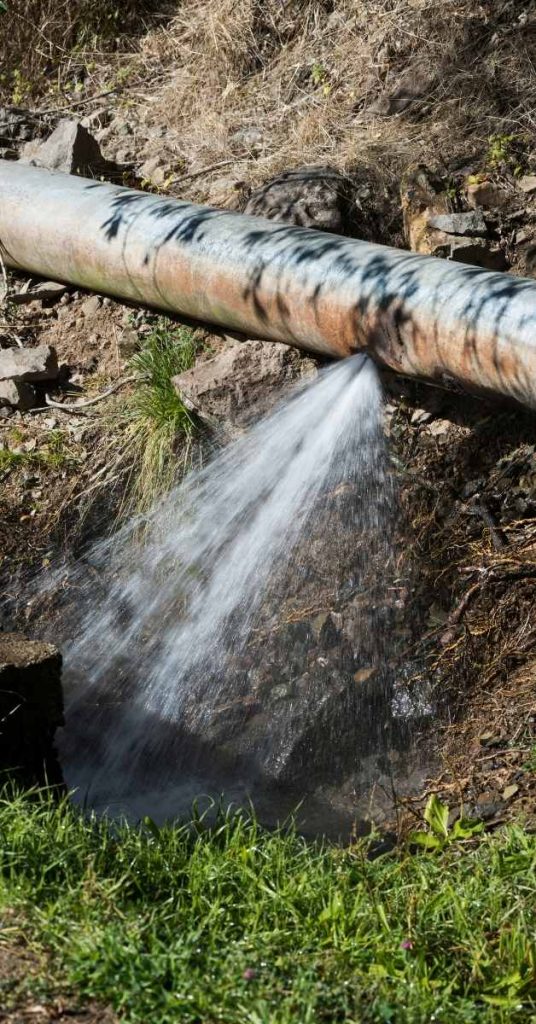
To find hidden water leaks in your home, follow these steps:
- Monitor Your Water Meter: Start by turning off all water sources in your home, including faucets, appliances, and irrigation systems. Check your water meter reading. If it continues to increase over a short period (e.g., an hour), you likely have a hidden leak.
- Inspect for Visible Signs: Look for visible signs of water leaks, such as damp or discolored spots on walls, ceilings, or floors. Check for mold, peeling paint, or wallpaper, as these may indicate hidden moisture.
- Listen for Sounds: Pay attention to unusual sounds like dripping or running water, especially in areas with no visible water sources.
- Check Water Bills: Compare your water bills over several months. A sudden unexplained increase in water usage can be a sign of a hidden leak.
- Inspect Toilets: Toilets are common sources of leaks. Add a few drops of food coloring to the tank and wait. If the color appears in the bowl without flushing, you have a leak.
- Examine Faucets and Fixtures: Check for dripping faucets, showerheads, and fixtures. Even a slow drip can waste a significant amount of water.
- Inspect Appliance Connections: Examine the connections to appliances like washing machines, dishwashers, and refrigerators. Look for signs of water pooling or moisture.
- Outdoor Check: Inspect outdoor hose bibs and irrigation systems for leaks. Puddles or wet spots in the yard can be a clue.
- Use a Leak Detection Device: Consider using a water leak detection device or moisture meter to pinpoint the source of hidden leaks. These tools can identify moisture in walls or floors.
- Professional Inspection: If you can’t locate the leak or suspect it’s within walls or underground pipes, consider hiring a professional plumber or leak detection specialist. They have specialized equipment like thermal imaging cameras and acoustic sensors to detect hidden leaks.
- Pressure Test: A plumber can perform a pressure test on your plumbing system to check for leaks. This involves pressurizing the pipes and monitoring pressure drops, which can indicate leaks.
- Repair the Leak: Once you’ve located the hidden leak, take the necessary steps to repair it. Depending on the severity and location of the leak, this may involve patching, pipe replacement, or other repairs.
Related: Signs of a slab leak.
Locating the Leak
Before calling in a plumber, you can try to find the leak in or outside your house and see if it is something you can fix yourself. Even if you can’t, you will be in a position to show the plumber where you think the leak is to reduce the cost.
Here is how to detect a water leak:
1. Stop any Water Usage
You will first need to turn off all faucets in and outside your house. Apart from that, make sure that the washing machine, dishwasher, ice maker and other appliances are not running.
During the duration of this test, make sure nobody flushes the toilet or takes a shower. Any water used will be registered as leak which can give you a faulty finding.
2. Locate Your Water Meter
Your water meter is usually located between your house and the street, near the curb or sidewalk. It is found inside a concrete box with a metal or plastic lid with“Water” or “Water Meter” inscribed at the top. In very cold areas, the meter will be found inside the house, usually in the basement.
Open the water meter lid using a long screwdriver. Be careful as spiders, snakes and other such animals could have made that space their home.
Wipe the water meter with a rag to clearly see the numbers.
3. Check the Leak Detector
If you look carefully on the water meter, you will see a small triangle (or sometimes a gear) which is usually blue or red in color but could also be any other color. That is the leak detector.

A leak detector is very sensitive and will keep spinning if there is even a slow leak or water demand anywhere in the house. Check if the leak detector is spinning or stationary.
A spinning leak detector is a sign of a leak.
If your water meter has no leak detector, note the reading on the water meter and wait for 30 minutes. You can even take a picture with your phone and compare after the 30 minutes. For more information on how to read a water meter check out this post.
If there is a change in the meter reading you definitely have a leak. The next thing you need to find out if the leak is outside the house or inside the house.
Note: If you have a digital water meter, you will see the change in water consumption instantly. Some digital water meters will have a leak detector that will shut off water to your house in case of any leak.
4. Is the Leak Inside the House or Outside?
To find if the leak is outside the house or inside, you will need to turn off the main house water shut off valve. With that valve closed you will be testing for a leak between it and the water meter, where a big chunk of the pipe is underground.
Your main water shut off valve will be located in the basement or garage. It could also be located on an external wall where the main water line enters the building.
Turn the valve (knob) all the way clockwise. If you have a lever-handle valve put the handle at 90 degrees to the pipe.
Dash back to the water meter and check if the leak detector is still spinning. If the leak detector has stopped, the leak is definitely inside the house. On the other hand if the leak detector is still spinning the leak is outside the house most likely underground.
Again if your water meter has no leak detector you will need to take the reading and wait for 30 minutes to compare readings.
Inside the House
If you have a dripping faucet, you most likely need to replace the cartridge. The same thing applies for dripping tub spouts or shower heads. Such leaks are easy to notice and fix.
There is however one fixture that you need to be careful with as it can leak unnoticed for a long time. That is fixture is the toilet.

A toilet doesn’t have to leak from the tank to the floor. Most of the time it will leak from the tank to the bowl and the water will flow down the drain unnoticed.
After the water in the tank has reduced substantially, the toilet float will trigger the fill valve and the toilet will start to refill on its own. This phenomenon is usually referred to as ghost flushing.
To test if your toilet is leaking, put some dye tablet or food color inside the toilet tank and wait for 15 or so minutes. During that time, do not flush the toilet.
If the dye or food color appears inside the toilet, bowl, you definitely have a leaking toilet.
Fixing a leaking toilet is something you can easily do on your own. In most cases, you will only need to replace the toilet flapper. Check if the flush valve is broken as well.
If the leak is not caused by faulty fixtures, it could be due to a broken water pipes inside the wall. Even a pin-sized hole on a water pipe is enough to cause extensive water damage and could be even worse if the problem is not fixed fast.
Some of the signs you may have a water leak inside your walls include:
- Damp walls. A leak inside your walls will soak the dry wall and this could also be accompanied by a musty smell as mold starts to grow.
- Peeling or discolored paint. A water leak will cause a discoloration or peeling of paint on a wall or the upstairs ceiling. A yellowish or brownish stain on the wall or ceiling is a sign of a water leak.
Is it Underground?

Unless you are ready to dig up the entire length of your underground water pipe, detecting the exact location of an underground leak requires a leak detector.
There are leak detectors that can be installed to notify you immediately you have a leak. These leak detectors monitor the flow of water through a pipe. In case of an abnormal flow, they cut off water supply to the house.
The leak detectors I am referring to in this case are used by plumbers to pinpoint the exact location of the leak out in the yard after a leak has already occurred.
The best thing you can do when you notice that you have an underground water leak is to call a professional in that field. They will have electronic location instruments and acoustics to locate the leak instead of tearing up your yard and especially if the leak is under a concrete slab.
If you still have old steel water pipes it would be a good idea to replace them with PEX or even copper. The pro will look at the state of your pipes and recommend the best solution for you.
